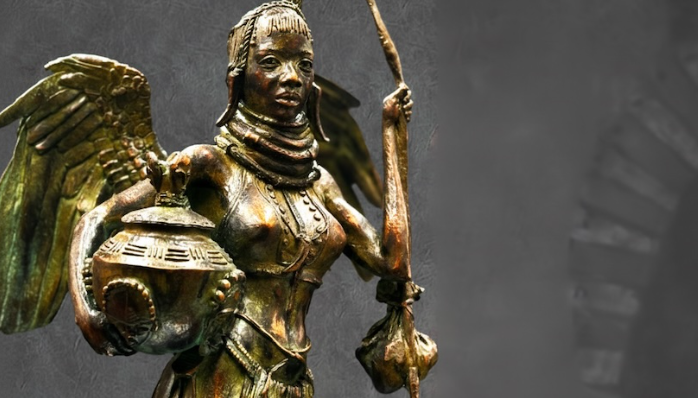Asase Yaa, in the indigenous society of the Akan people of Ghana, is the great female spirit of the earth, second only to Nyame (the Creator) in power and reverence.
The Akans regard the earth as a female spirit because of its fertility and its power to bring forth life, and they further personalize it as a mother because human beings depend on it for their continued nurturance and sustenance. Asase Yaa is of paramount importance to the Akans because it is through her, by way of libation and veneration, that they gain access to and maintain sacred connections with their ancestors.
Growing up as an Akan child, I used to hear stories about her benevolent character, how she leads people with good character to finding hidden treasures, such as gold, in her. My grandfather had a shrine that housed many gods, but I never saw a pictorial representation of Asase Yaa.
Also, I saw farmers performed libation and rituals in her honor under big trees before the beginning of every farming season, but they didn’t have a pictorial representation of her in a form of sculpture like the other gods they had. As a child, I was very curious to see how she looks.
As I grew up and became good with sculpting, and with the depth of knowledge I have of her, I decided to pictorially represent her in my sculpture. I captured her in a very beautiful and curvy body, which symbolizes fertility. She’s beautifully adorned with regalia from her hair to the ankle of her legs. She wears “etam,”an indigenous style of Akan females’ dressing, where a piece of cloth is hanged on both the front and back of the waist-on-waist beads. She holds in her right hand a tree with a treasure in a sack tied to.
The tree symbolizes her place of worship, and the sack, the goodies that emanates from worshiping her. She holds in her left hand a mysterious pot decorated with masks.These masks are her messengers who look into the affairs of men and send out rewards to people from the pot whether good or evil. She has a pair of wings at her back which symbolizes her swiftness and ever-presence


Leave a Comment